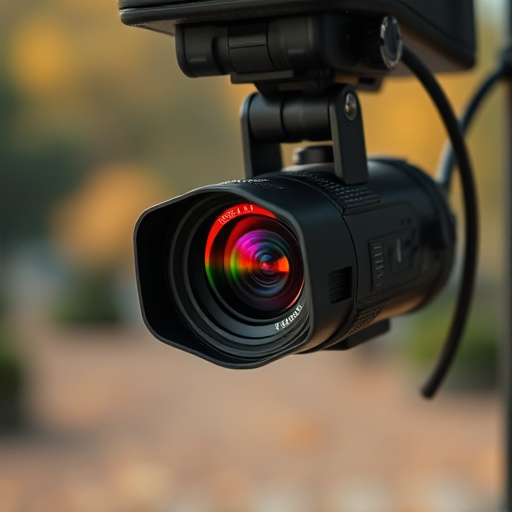Advanced surveillance technology hides cameras in everyday objects like light bulbs and wall outlets. Identifying signs such as unusual wiring, faint noises, visual cues (uncommon object arrangements, small holes), and network activity is crucial for spotting these devices. Balancing security needs with privacy rights requires ethical installation practices, including hiding cameras within mundane objects, using infrared technology discreetly, and respecting consent in private areas. Regular maintenance ensures the system's effectiveness while preserving its hidden nature.
Uncover the art of concealed security camera mounting with our comprehensive guide. In today’s world, understanding covert surveillance technology is paramount for both home and business owners. This article delves into the intricacies of identifying signs of hidden cameras, navigating ethical and legal considerations, and mastering discreet mounting techniques. Learn to recognize visual cues that may indicate a covert watchful eye and ensure your privacy while leveraging advanced security measures.
- Understanding Covert Surveillance Camera Technology
- Identifying Visual Cues: Signs of Hidden Cameras
- Ethical and Legal Considerations for Installation
- Best Practices for Discreet Mounting Techniques
Understanding Covert Surveillance Camera Technology
Covert surveillance camera technology has evolved significantly, allowing for discrete and effective monitoring. These cameras are designed to operate unseen, often integrated into everyday objects like light bulbs, smoke detectors, or even wall outlets. Understanding how they work is key to identifying potential hidden devices. Signs of covert surveillance cameras include unusual wiring, faint hums or beeps from seemingly innocuous items, and small pinholes or textures on surfaces that might indicate a lens.
Technicians use their expertise to spot these subtle indicators, as well as employ specialized tools to detect the presence of infrared LEDs or radio frequency signals that many covert cameras emit. By staying informed about the latest advancements in this technology, individuals can better protect their privacy and ensure they aren’t being monitored without their knowledge.
Identifying Visual Cues: Signs of Hidden Cameras
Identifying visual cues is a crucial step in recognizing potential hidden security cameras, or covert surveillance devices. These signs can be subtle but are often giveaways to their presence. One common indicator is an unusual arrangement of objects or decorations; for instance, a wall with multiple camera angles would raise suspicion. Similarly, small holes or cuts around corners or edges might suggest the installation of tiny lenses or components.
Another way to detect these devices is by looking for power sources that aren’t readily apparent. If you notice any mysterious cables or wires running along walls or hidden behind furniture, it could indicate the presence of a covert camera system. Additionally, modern technology often leaves digital footprints; analyzing network activity and device permissions can sometimes reveal unauthorized camera applications installed on your property.
Ethical and Legal Considerations for Installation
When installing concealed security cameras, it’s crucial to balance effective surveillance with ethical and legal responsibilities. The use of covert cameras raises privacy concerns, especially in public spaces or homes where individuals expect a certain level of seclusion. It’s essential to comply with local laws regarding hidden camera placement, which often require explicit consent from individuals being recorded, particularly in private areas like bedrooms or bathrooms.
Avoiding the obvious signs of covert surveillance is key to maintaining legal and ethical standards. This includes hiding cameras within everyday objects, using infrared technology for night vision without revealing the camera’s presence, and ensuring the recording area is not easily visible. Respecting privacy rights while enhancing security measures through concealed cameras requires a nuanced approach, one that respects individual freedoms while fostering a safer environment.
Best Practices for Discreet Mounting Techniques
When it comes to concealed security camera mounting, discretion is key. The best practices for discreet mounting techniques involve blending the camera with its surroundings. This can be achieved by using mounts that resemble everyday objects like light fixtures, plants, or even air conditioning vents. It’s crucial to avoid obvious bulges or visible hardware.
Additionally, positioning the camera at eye level and slightly angled downwards creates a natural line of sight while remaining hidden. Concealing the lens is another vital step; consider using covers or filters that match the environment. Regular maintenance and testing ensure optimal performance and help prevent signs of covert surveillance cameras from becoming evident, such as distorted images or unusual shadows.
In the realm of covert surveillance, understanding the technology and best practices is paramount. By identifying visual cues, such as signs of hidden cameras, and adhering to ethical and legal guidelines, individuals can ensure discreet installations. Leveraging these concealed security camera mounting recommendations will help foster a safer environment, while respecting privacy, in today’s digital era. Remember that knowledge is key; armed with the right information, folks can navigate this technology effectively and responsibly.
